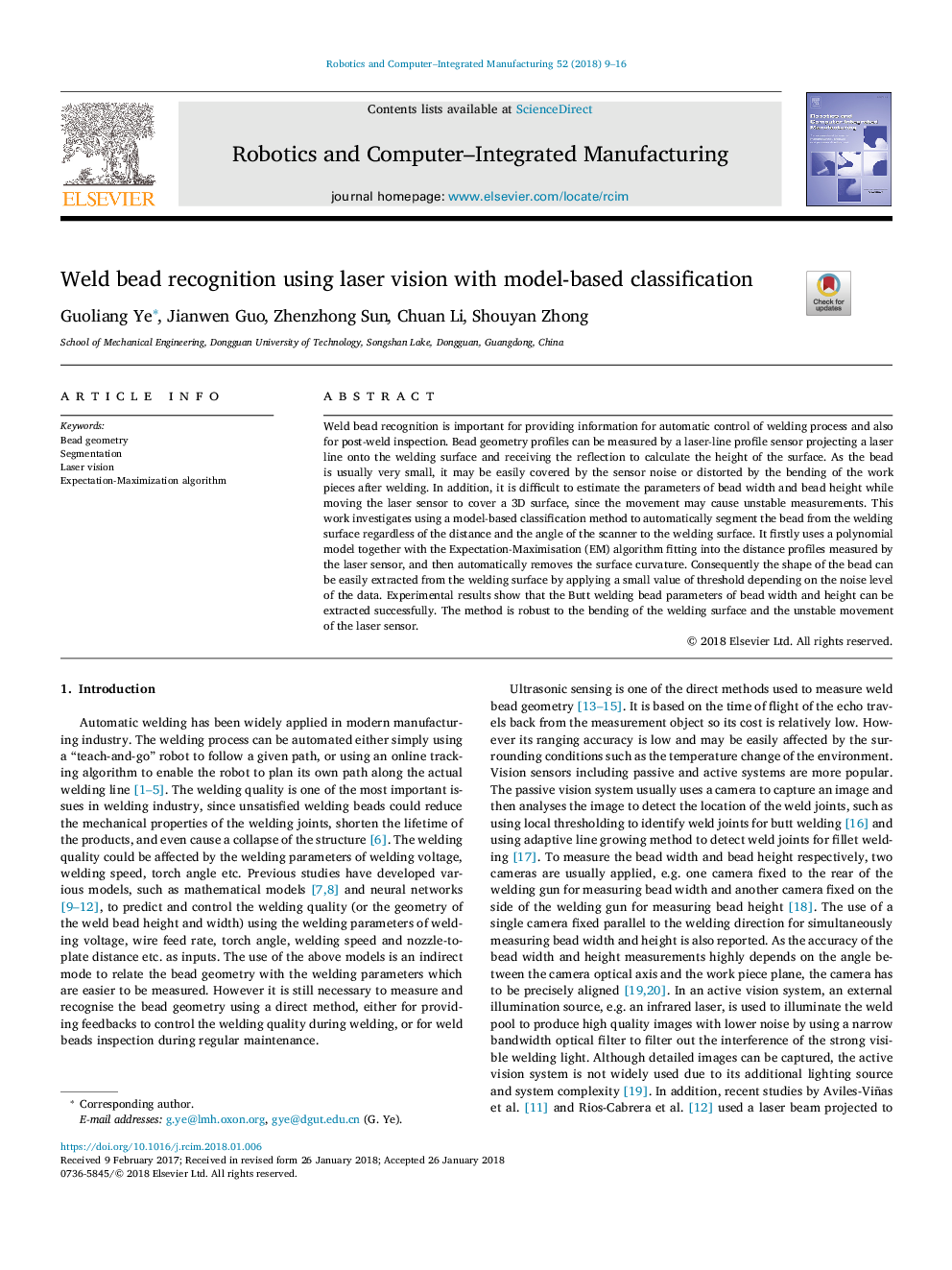| Article ID | Journal | Published Year | Pages | File Type |
|---|---|---|---|---|
| 6867778 | Robotics and Computer-Integrated Manufacturing | 2018 | 8 Pages |
Abstract
Weld bead recognition is important for providing information for automatic control of welding process and also for post-weld inspection. Bead geometry profiles can be measured by a laser-line profile sensor projecting a laser line onto the welding surface and receiving the reflection to calculate the height of the surface. As the bead is usually very small, it may be easily covered by the sensor noise or distorted by the bending of the work pieces after welding. In addition, it is difficult to estimate the parameters of bead width and bead height while moving the laser sensor to cover a 3D surface, since the movement may cause unstable measurements. This work investigates using a model-based classification method to automatically segment the bead from the welding surface regardless of the distance and the angle of the scanner to the welding surface. It firstly uses a polynomial model together with the Expectation-Maximisation (EM) algorithm fitting into the distance profiles measured by the laser sensor, and then automatically removes the surface curvature. Consequently the shape of the bead can be easily extracted from the welding surface by applying a small value of threshold depending on the noise level of the data. Experimental results show that the Butt welding bead parameters of bead width and height can be extracted successfully. The method is robust to the bending of the welding surface and the unstable movement of the laser sensor.
Related Topics
Physical Sciences and Engineering
Computer Science
Artificial Intelligence
Authors
Guoliang Ye, Jianwen Guo, Zhenzhong Sun, Chuan Li, Shouyan Zhong,
